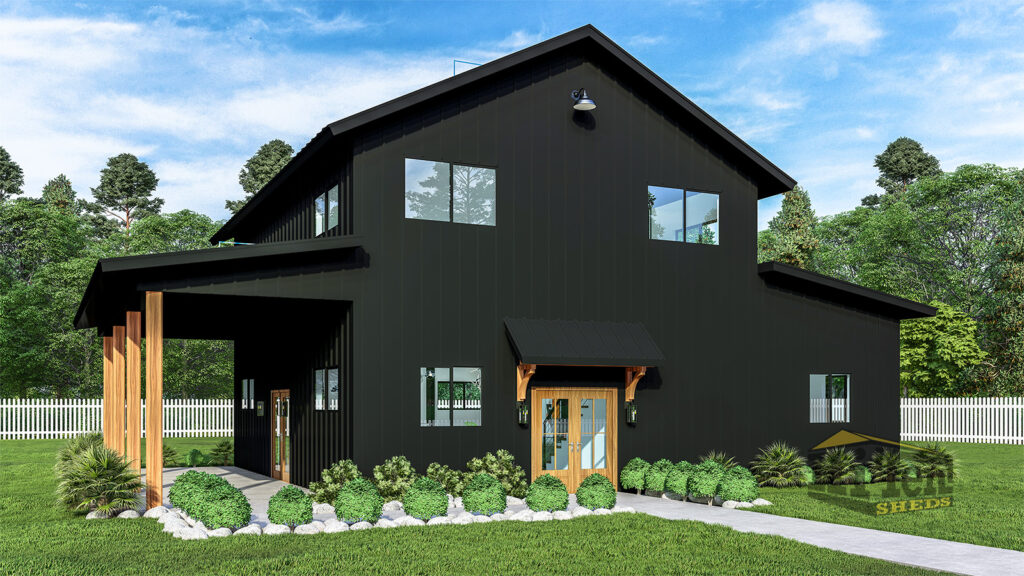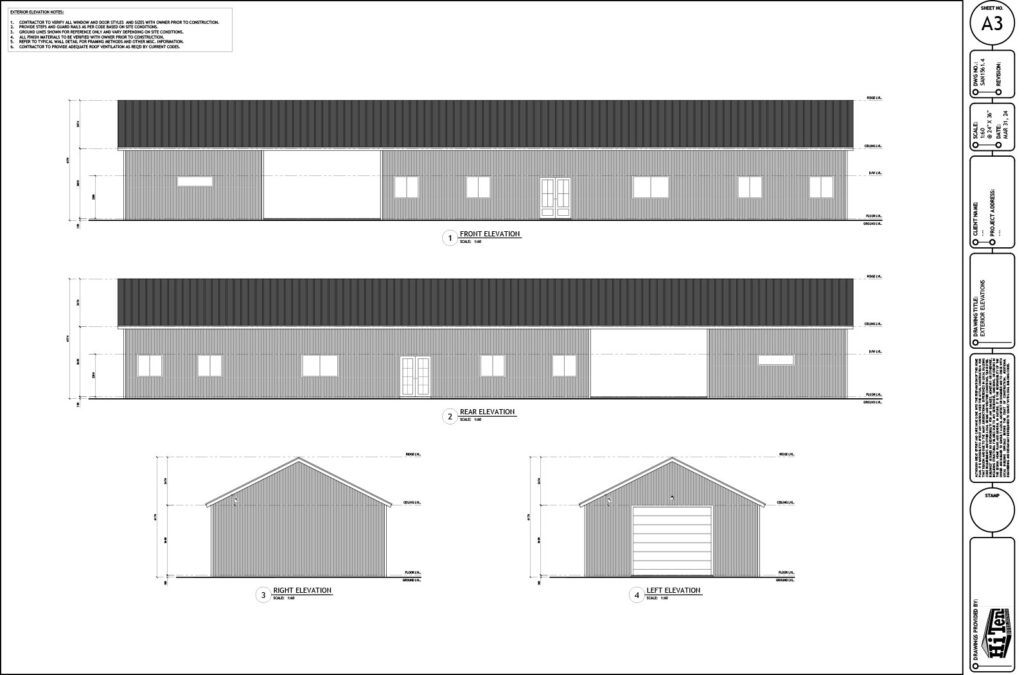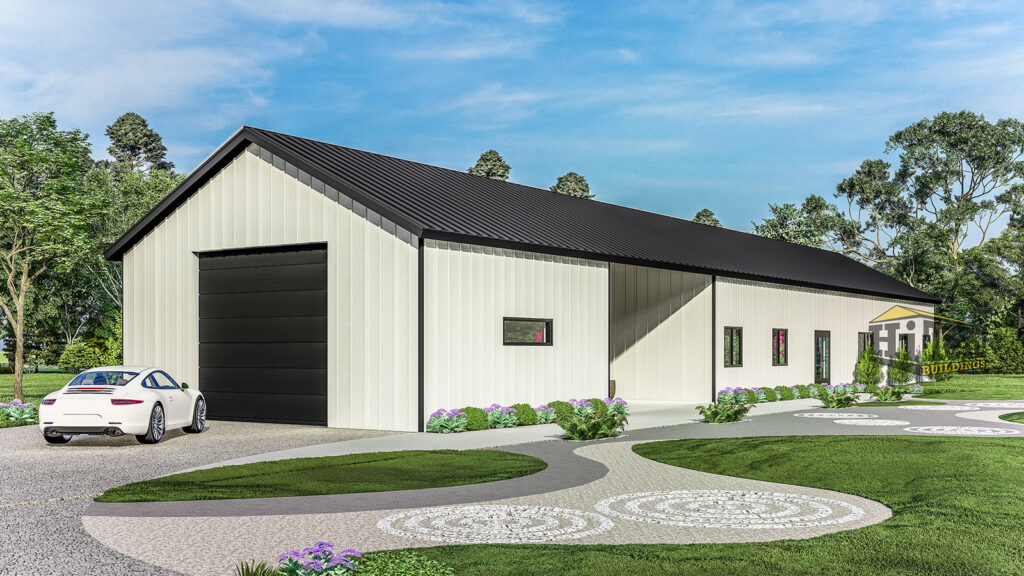Tree Change Home Builders: Your Complete Guide to Building on Acreage in Queensland & NSW
The tree change dream is real. You’re done with suburban living, traffic, tiny blocks, and neighbours three metres away. You want space, peace, a workshop, maybe some chickens, and the freedom to live life on your terms.
But here’s the challenge: building on rural acreage is completely different from building in the suburbs. Different councils, different regulations, different costs, and different builders. Many traditional home builders won’t even quote on rural blocks, and those who do often add massive premiums for “difficult sites.”
That’s where shed home builders like us come in. We specialise in acreage builds across eastern Australia, and we’ve learned exactly what works and what doesn’t when it comes to tree change home construction.
Why Traditional Builders Struggle with Tree Change Projects
Let’s be honest about why your local project builder probably isn’t excited about your acreage block:
- Access issues: Many rural blocks have steep driveways, narrow gates, or difficult terrain that makes deliveries expensive and complicated.
- Utility connections: No town water, no sewer, sometimes no power at the boundary. Traditional builders are used to connecting to existing services, not installing tanks, septic systems, and off-grid solutions.
- Council variations: Every rural council has different requirements, overlays, and approval processes. Builders who work in one area don’t want to learn another council’s rules.
- Distance and logistics: Traveling 1-2 hours each way to a site adds significant costs. Many builders simply won’t quote beyond their local area.
- Site preparation costs: Rural blocks often need significant earthworks, retaining walls, or driveway construction before building can even start.
The result? You get quotes that are 30-50% higher than suburban builds, or you get no quotes at all.
Why Shed Homes Work Perfectly for Tree Change Builds
Shed homes, specifically Class 1a residential shouses, solve most of these problems naturally:
Engineered for Rural Conditions
Every shed home we build is engineered site-specifically for your land’s wind rating, bushfire attack level (BAL), and soil conditions. We’re not trying to drop a suburban house design onto rural land and hoping it works. The engineering is done for YOUR site from the start.
Crane Installation Means Faster Builds
Traditional timber frame homes require multiple trades over many weeks. Shed homes are delivered as a kit and installed with a crane in days, not months. Less time on site = lower labour costs, especially important when tradies are traveling to rural locations.
A typical shed home frame goes up in 2-4 weeks. Compare that to 8-12 weeks for a traditional timber frame build.
Built for Acreage Lifestyle
Shed homes naturally include the features tree changers want:
- Integrated or attached workshop/garage space
- High ceilings and open-plan living
- Verandas and outdoor living areas
- Durable, low-maintenance steel construction
- Flexibility for future additions (more shedding, carports, awnings)
Installer Network Across Eastern Australia
We work with 100+ licensed installers across Queensland, NSW, Victoria, Tasmania, NT and South Australia. Wherever your tree change takes you, we have experienced installers who know the local councils, understand rural builds, and can handle the logistics.
Popular Tree Change Regions We Service
We service eastern Australia only: Queensland, NSW, Victoria, Tasmania, NT and South Australia. Here are the regions where we’re seeing the strongest tree change demand:
Scenic Rim, Queensland
Just 60-90 minutes from Brisbane and the Gold Coast, the Scenic Rim is the perfect tree change for people who want rural lifestyle without total isolation.
Popular towns: Beaudesert, Canungra, Boonah, Rathdowney, Kalbar
What we love: Stunning mountain views, strong community feel, excellent cafes and farmers markets, close enough to the city for work or family visits.
Council considerations: Scenic Rim Regional Council has specific overlays for environmental protection, landslide risk, and bushfire. Our engineering and approval process handles these requirements as standard.
Typical build costs: $250k-$500k for a complete 3-4 bedroom shouse including slab, installation, and lockup. Owner-builders can reduce this by 20-30%.
Toowoomba Region, Queensland
The “Garden City” and surrounding areas offer affordable acreage, four distinct seasons, and a thriving regional economy.
Popular areas: Toowoomba, Highfields, Crows Nest, Pittsworth, Oakey
What we love: Cooler climate (actual winters!), established infrastructure, lower land prices than coastal areas, strong agricultural community.
Council considerations: Toowoomba Regional Council is generally builder-friendly with clear approval processes. Bushfire ratings are typically lower than coastal ranges, which can reduce build costs.
Typical build costs: $220k-$450k complete. Land is more affordable here, so your total investment (land + build) is often $100k-$200k less than Scenic Rim or coastal areas.
Hunter Valley, NSW
Wine country living with acreage properties in high demand from Sydney and Newcastle tree changers.
Popular areas: Cessnock, Maitland, Singleton, Broke, Pokolbin, Branxton
What we love: Established wine and food culture, weekend destination appeal (great for Airbnb potential), 2 hours from Sydney, strong rental market.
Council considerations: Multiple councils (Cessnock, Singleton, Maitland) with varying requirements. Bushfire overlays are common. We work with local certifiers who know these councils well.
Typical build costs: $280k-$550k complete. Higher than Queensland due to NSW building costs and stricter compliance requirements, but land values and rental potential are also higher.
Central Coast Hinterland, NSW
The perfect combination of sea change and tree change close to beaches but with acreage privacy.
Popular areas: Wyong, Yarramalong, Mangrove Mountain, Kulnura, Peats Ridge
What we love: 90 minutes from Sydney, close to beaches and lakes, strong community vibe, affordable compared to coastal suburbs.
Council considerations: Central Coast Council has environmental overlays and bushfire requirements. Private certifiers can fast-track approvals to 10-20 days in many cases.
Typical build costs: $260k-$520k complete. Similar to Hunter Valley pricing.
The Tree Change Build Process: What to Expect
Building on acreage is different from suburban building. Here’s the realistic process and timeline:
Step 1: Land Selection and Due Diligence (Before You Buy)
This is where most tree changers make expensive mistakes. They fall in love with a block, purchase it, then discover problems that add $50k-$100k to their build cost.
Critical checks before purchasing:
- Access: Can a crane truck and delivery vehicles reach the building site? Is there an existing driveway, or will you need to build one?
- Bushfire Attack Level (BAL): Properties in bushfire-prone areas require expensive upgrades (ember-proof vents, fire-rated windows, etc.). BAL-40 or BAL-FZ can add $30k-$80k to build costs.
- Slope and earthworks: Steep blocks require retaining walls, cut-and-fill, or pier-and-beam construction. Each adds significant cost.
- Soil conditions: Rocky soil, reactive clay, or poor drainage all impact slab costs. Budget $1,500-$3,000 for a geotechnical soil test before purchasing.
- Utilities: Where is power, water, and sewerage? If there’s no power at the boundary, connection can cost $20k-$100k+ depending on distance. No town water means tanks ($5k-$15k). No sewer means septic or treatment system ($15k-$35k).
- Council overlays: Environmental protection, landslide risk, tree protection, heritage, and flood overlays all complicate and delay approvals.
Our recommendation: Use our $200 Site Assessment Service BEFORE you purchase land. We’ll assess all these factors and give you a realistic cost estimate. This service typically saves buyers $20k-$50k in avoided mistakes.
Step 2: Design Selection and Customization (Weeks 1-4)
Once you own land (or have a contract subject to building approval), we start the design process.
What happens:
- You select a base design from our 7 standard models (Freemantle, Bangaree, etc.)
- We discuss customization: extra bedrooms, larger kitchen, verandas, attached or separate shed, etc.
- We create a custom redraw specific to your requirements and site
- You receive a detailed quote including all materials, engineering, delivery, and estimated installation costs
Timeline: 1-2 weeks for initial quote, another 1-2 weeks for design refinements and final quote acceptance.
Step 3: Engineering and Council Approval (Weeks 5-12)
This is where site-specific engineering happens.
What’s included:
- Structural engineering for your site’s wind rating (cyclonic or non-cyclonic)
- Bushfire Attack Level (BAL) certification and design modifications if required
- Architectural drawings and floor plans
- Energy efficiency certification (7-star minimum)
- Slab design based on soil test results
Council approval timeline: Varies dramatically by council and site complexity. Simple sites with no overlays: 4-6 weeks. Complex sites with multiple overlays: 12-20 weeks.
Fast-track option: We work with private certifiers in most regions who can approve straightforward builds in 10-20 days. This costs $2k-$5k extra but saves months of waiting.
Step 4: Site Preparation (Weeks 13-16)
While your kit is being manufactured, site preparation happens.
Typical site prep includes:
- Clearing and leveling the building pad
- Driveway construction or improvement for delivery access
- Temporary power and water for construction
- Soil test and slab preparation
Costs: $10k-$50k depending on site conditions. Steep blocks or difficult access can push this to $80k+.
Step 5: Kit Manufacturing and Delivery (Weeks 17-24)
Your shed home kit is manufactured to your exact specifications.
Timeline: 6-8 weeks from deposit payment to delivery.
What’s delivered: All steel framing, roof sheeting, wall cladding, windows, doors, insulation, fasteners, and flashing. Everything needed for the structural shell.
Delivery logistics: We coordinate delivery with your installer to ensure the kit arrives when they’re ready to start. Delivery to remote locations may incur additional transport costs ($2k-$8k depending on distance).
Step 6: Slab and Frame Installation (Weeks 25-32)
The exciting part your home goes up fast.
Slab pour: 1-2 weeks including formwork, reinforcement, and concrete pour. Requires 7-14 days curing before frame installation.
Frame installation: 2-4 weeks depending on size and complexity. A crane lifts the main structural components into place, then installers bolt everything together and install roof and wall sheeting.
Lockup completion: Windows and doors installed, building is weather-tight and secure.
Step 7: Internal Fitout (Weeks 33-48)
This is where owner-builders can save significant money by doing work themselves or hiring trades directly.
Typical fitout includes:
- Electrical rough-in and final fit-off
- Plumbing rough-in and final fit-off
- Insulation (ceiling and walls)
- Internal wall framing and plasterboard
- Kitchen and bathroom installation
- Flooring (tiles, timber, carpet, polished concrete)
- Painting
- Final fixtures and fittings
Timeline: 12-20 weeks for a full fitout. Owner-builders doing some work themselves may take 6-12 months depending on their availability and skill level.
Costs: $80k-$200k depending on finishes and whether you’re owner-building or using a full fitout contractor.
Step 8: Final Inspections and Occupancy (Week 49-52)
Final building inspections, occupancy certificate, and you’re ready to move in.
Total timeline: 9-12 months from land purchase to move-in for most tree change builds. Owner-builders may take 12-18 months if doing significant work themselves.
Tree Change Build Costs: The Full Picture
Let’s talk real numbers. Here’s what a typical tree change shed home build costs across our service regions:
Budget Tree Change Build ($220k-$300k Total)
Specifications:
- 3 bedroom, 2 bathroom, 180m² living area
- Kit only purchase, owner-builder fitout
- Simple site (minimal earthworks, low BAL rating)
- Standard finishes (laminate benchtops, basic tiles, carpet)
Breakdown:
- Kit (materials, engineering, delivery): $90k-$120k
- Slab and installation: $60k-$80k
- Owner-builder fitout: $70k-$100k
Standard Tree Change Build ($300k-$450k Total)
Specifications:
- 3-4 bedroom, 2-2.5 bathroom, 220m² living area
- Built to lockup by licensed installer
- Moderate site (some earthworks, BAL-12.5 or BAL-19)
- Good quality finishes (stone benchtops, quality tiles, timber floors)
- Separate matching shed (12x9x4m)
Breakdown:
- Kit (materials, engineering, delivery): $130k-$170k
- Slab and installation to lockup: $90k-$130k
- Fitout contractor: $100k-$150k
- Matching shed kit: $30k-$40k
Premium Tree Change Build ($450k-$750k+ Total)
Specifications:
- 4-5 bedroom, 3+ bathroom, 280m²+ living area
- Complex site (significant earthworks, BAL-29 or BAL-40, difficult access)
- Premium finishes (designer kitchen, high-end bathrooms, polished concrete or hardwood floors)
- Large separate shed or multiple outbuildings
- Extensive verandas, outdoor living, landscaping
Breakdown:
- Kit (materials, engineering, delivery): $180k-$250k
- Slab and installation to lockup: $130k-$200k
- Premium fitout: $150k-$250k
- Additional shedding and site works: $50k-$100k
Owner-Builder vs Full Contract: Which Is Right for Your Tree Change?
Many tree changers are owner-builders, not because they want to do all the work themselves, but because they want control and savings.
Owner-Builder Advantages
- 20-30% cost savings: On a $400k project, that’s $80k-$120k in your pocket.
- Control over finishes: You choose every tap, tile, and fixture without builder markups.
- Flexibility: You can stage the build, doing some work yourself and hiring trades for others.
- Quality control: You’re on site, managing quality directly.
Owner-Builder Challenges
- Time commitment: Managing trades, ordering materials, and coordinating schedules is essentially a part-time job.
- Knowledge required: You need to understand building sequences, trade coordination, and compliance requirements.
- Liability: You’re responsible if something goes wrong. Insurance is more complex.
- Finance: Some lenders won’t finance owner-builder projects, or require larger deposits.
Our Recommendation
Most successful tree change owner-builders use this hybrid approach:
- Hire professionals for: Slab, frame installation, electrical, plumbing, roofing
- Do yourself or manage directly: Internal walls, painting, tiling, landscaping, decking
This gives you the 20-30% savings without requiring you to be a licensed tradesperson.
Utilities on Acreage: What You Need to Know
One of the biggest cost surprises for tree changers is utilities. Here’s what to expect:
Power
If power is at the boundary: Connection costs $5k-$15k depending on distance from pole to house.
If power is 500m+ away: Connection can cost $50k-$200k+. At this point, off-grid solar becomes cost-competitive.
Off-grid solar system: $30k-$60k for a quality system with battery storage. Many tree changers choose this even when grid power is available for energy independence and lower running costs.
Water
Town water: Rare on acreage. Connection costs vary wildly ($10k-$50k+).
Rainwater tanks: Most common solution. Budget $5k-$15k for 100,000L-150,000L of storage (enough for a family of 4 with reasonable water use).
Bore water: If available, drilling costs $8k-$20k depending on depth. Not suitable for drinking without treatment, but excellent for gardens, livestock, and toilets.
Sewerage
Town sewer: Almost never available on acreage.
Septic system: $12k-$25k for a standard system. Requires suitable soil and sufficient land area.
Aerated wastewater treatment system (AWTS): $18k-$35k. Required on smaller blocks or poor soil. Needs regular maintenance ($300-$500/year).
Why Choose Shed Homes for Your Tree Change Build?
We’ve specialized in acreage builds across eastern Australia since we started. We understand tree changers because most of our clients ARE tree changers people leaving the city or suburbs for space, lifestyle, and freedom.
What sets us apart:
- Class 1a residential certification: Not converted sheds, but purpose-designed residential homes using steel construction.
- Site-specific engineering: Every project engineered for your exact site conditions wind, bushfire, soil.
- 100+ installer network: Licensed, experienced installers across Queensland, NSW, Victoria, Tasmania, NT and South Australia who specialise in rural builds.
- $200 Site Assessment Service: Assess land before you buy, or optimise your existing site for the best build outcome.
- Owner-builder support: We provide all documentation, guidance, and installer connections for successful owner-builder projects.
- No installation markup: We make our margin on the kit. Installation quotes go directly between you and the installer no hidden margins.
Most importantly, we’re not trying to sell you a suburban house on a rural block. We’re designing homes specifically for the acreage lifestyle: workshop space, high ceilings, verandas, low maintenance, and built to last.
Next Steps for Your Tree Change Build
If you’re serious about making the tree change, here’s what we recommend:
- Download our Land Buying Checklist: This comprehensive guide covers the 50+ critical points to assess before purchasing acreage. It includes cost calculators, expert questions, and our $500 site assessment template.
- Book a Site Assessment ($200): If you own land or are considering a purchase, our assessment will identify opportunities and avoid costly mistakes.
- Browse our designs: Look at the Freemantle, Bangaree, and our other proven designs. Get a feel for what works on acreage.
- Request a preliminary quote: Provide your site address (we need the actual address for accurate wind and bushfire engineering), preferred design, and customization ideas. We’ll provide a detailed quote within 48 hours.
Ready to make your tree change dream a reality? Contact us at sales@shed-homes.com.au or call 0488 510 550. Let’s talk about your land, your vision, and how we can make it happen.
Shed Homes specialises in Class 1a residential shed homes for acreage properties across eastern Australia. We service Queensland, NSW, Victoria, Tasmania, NT and South Australia with engineered, certified designs perfect for tree changers, lifestyle seekers, and acreage living.




